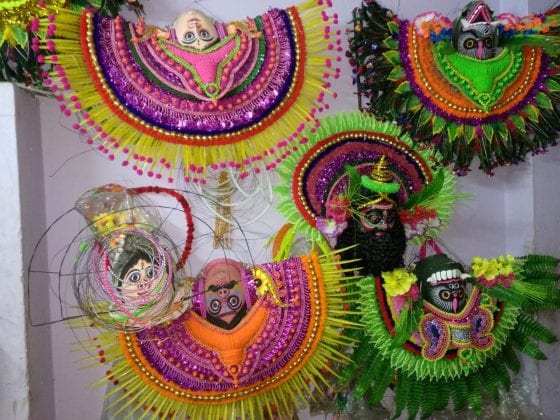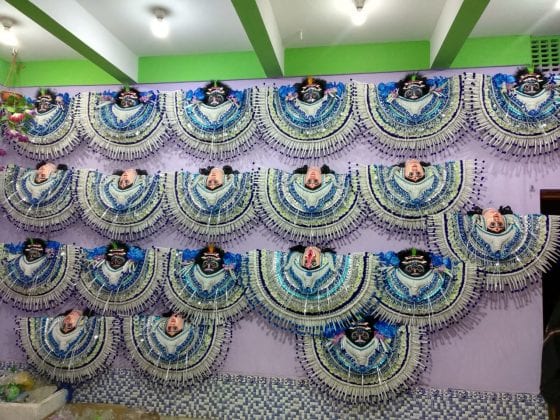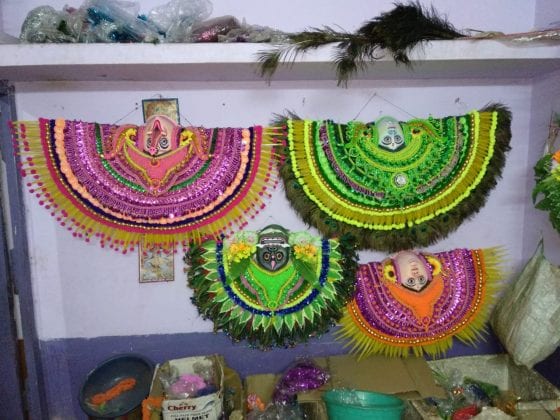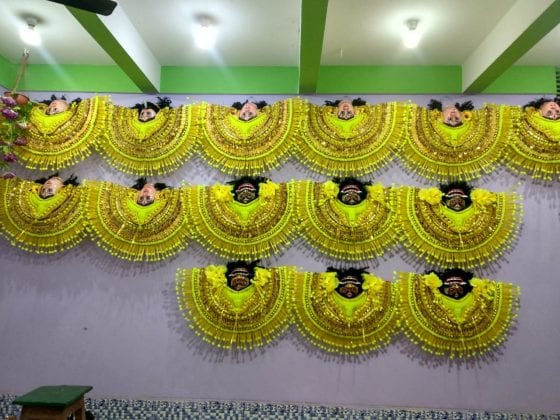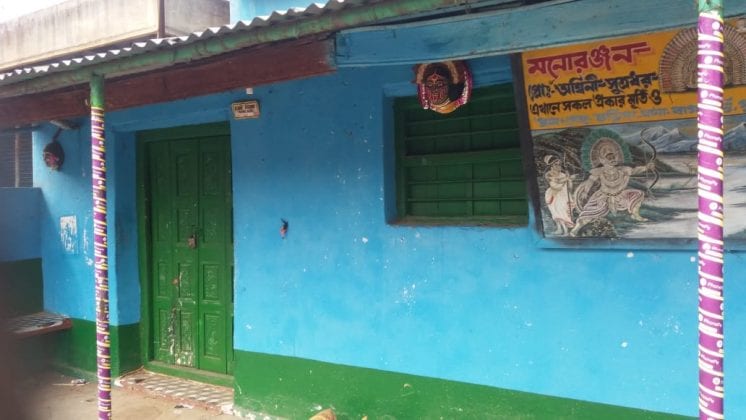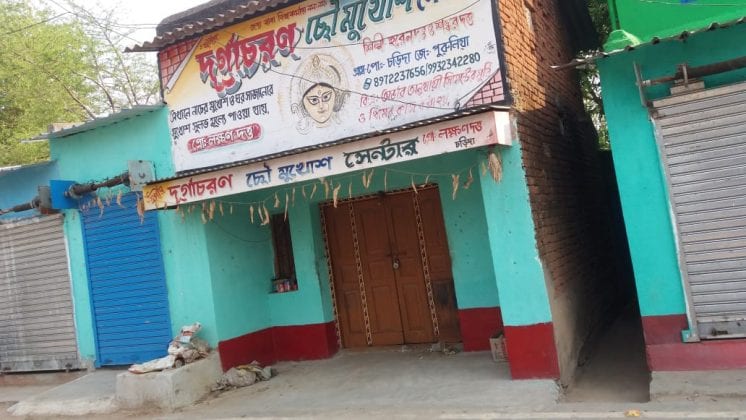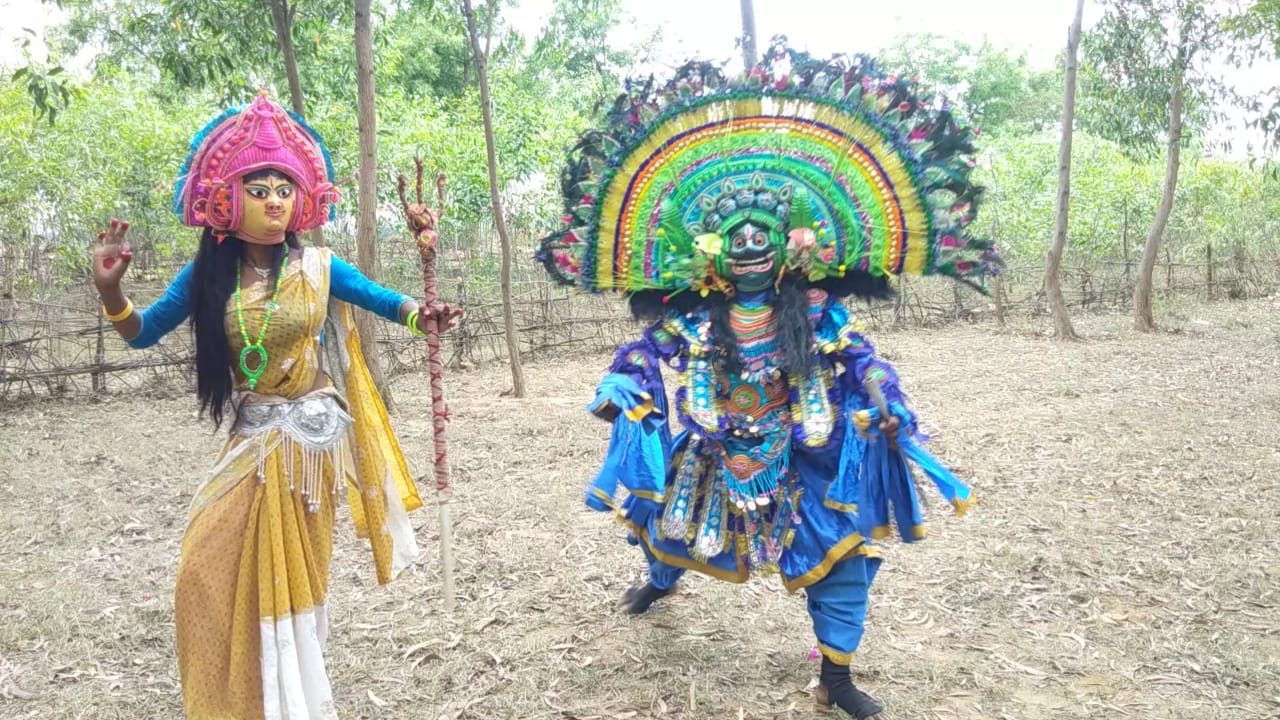
Masks in high demand but Bengal’s traditional mask makers lose jobs

Masks of various sizes and shades that generally glare at visitors from the row of shops lining the paved road that bisects Charida village, nestled in the foothills of Ayodhya Hills, have gone missing. The only face-covers that can be seen instead are the protective medical gear on a few villagers darting on the empty road.
For over 500 families in this village of mask makers in Purulia district, about 300 km from Kolkata, this sudden change means loss of livelihood and poverty staring in the face.
They, for generations, have been making masks used in Chhau dance — a semi-classical tribal dance of eastern India listed by United Nations Educational, Scientific and Cultural Organisation (UNESCO) as intangible cultural heritage of humanity.
The dance form, combining martial and folk traditions, originated some 800 years ago in Mayurbhanj in Odisha. It is equally popular in parts of West Bengal and Jharkhand.
Every year, during the months of Chaitra (March-April), villages in Purulia, Medinipur, and Bankura districts of West Bengal come alive with the sound and rhythm of various traditional musical instruments as Chhau dance troupes enact episodes from epics such as Ramayana and Mahabharata, local folklores and abstract themes.
Masks of Hindu gods, goddesses, mythical demons and other characters played in the dance dramas are an indispensable ensemble of this performing art. The 500-odd families in Charida village almost have the monopoly in making these gorgeous visages.
Almost all the Chhau dance groups of West Bengal and Jharkhand source their masks from Charida’s craftsmen. In the Odisha variant of the dance form, however, masks are not used.
There are over 900 government-recognised dance groups in 20 blocks of Purulia district alone.
The dance dramas are mostly enacted in rural settings, coinciding with the Gajan festival that spans a week, starting in the last week of the Bengali month of Chaitra.
Covid-19 shadow on Chhau dance
This year, as the shadow of the COVID-19 pandemic stretched across India, the dance, which many scholars claim derived its name from the Sanskrit word ‘chaya’ (shadow), became a casualty like many other activities that entail mass gatherings.
“All our bookings have been cancelled due to restrictions on outdoor performances,” said Ranjit Mahato of the Biswakarma Chhau Nritya Dal of Bhalika village. For one performance, the top groups, generally comprising 25 to 30 members, charge between Rs.10,000 and 15,000.
“This is the peak performing season for us. We get to perform every day in one village or the other during this time,” Mahato said. “This season we could not put up a single show.”
No takers for Chhau masks
The cancellation of shows has rendered themask-makers jobless.
“Since there is no show happening anywhere, naturally, there is no demand for masks,” said Manoranjan Sutradhar, one such Charida craftsman whose family has been making masks for generations.
Ahead of the Chhau season, Manoranjan had procured raw materials worth Rs. 6 lakh, hoping to generate a business of around Rs. 12 lakh. “I have taken a loan of Rs.4 lakh from a local women self-help group at an interest of 5 per cent. I was confident of returning the money in two months. But now how will I repay the loan?” he told The Federal over phone.
Similar worries are gnawing at the heart of many other families in the village involved in mask-making. About 250 families, primarily from the Sutradhar clan, are involved with the craft while another 300 families work under the craftsmen as decorators.
Besides, the craftsmen also employ helpers in their workshops.
The price of good-quality Chhau masks range from Rs.1000 to 5,000 (comma) depending on size and quality. For bedecking a mask priced at Rs.1,000, a decorator gets Rs.120. Similarly, for decorating a mask worth Rs.5,000, he gets Rs.450-500. Though women are also now getting involved in the mask-making and some all-lady (all-woman) dance groups too have been formed, Chhau still is essentially male dominated.
This year, neither performers, craftsmen nor the decorators have made any monetary gains.
Awareness through Chhau
But, that did not prevent Chhau performers like Ranjit Mahato from utilising his art form to create awareness about the need to stay home to battle the virus.
He has recently choreographed an eight-minute dance drama titled ‘Coronasur’ (demon Corona) wherein COVID-19 is personified as a demon that has besieged ‘Mother India.’
Unlike in other Chhau recitals where a minimum of 25-30 people are involved, this short enactment had only two performers to drive home the point of social distancing.
Surely, they have lost livelihood but not the spirit.
(With inputs from Amit Lal Singh Deo in Purulia)


